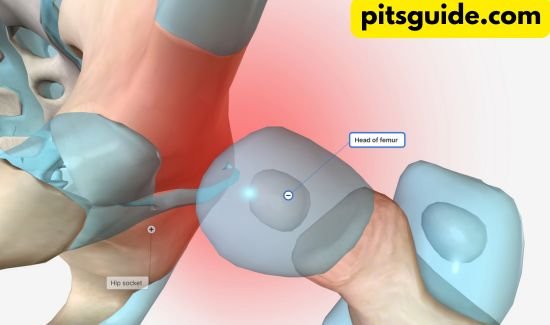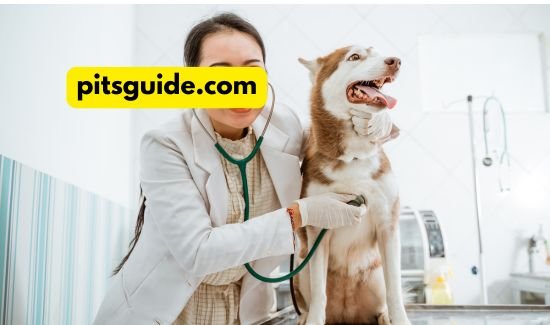Table of Contents
- Introduction
- Importance of Early Detection
- Key Takeaways
- Understanding Pet Cancer: A Critical Health & Wellness Issue
- Common Types of Pet Cancer
- Risk Factors in Different Pet Species
- Impact on Pet Life Expectancy
- Physical Warning Signs Every Pet Owner Should Know
- Recognizing Lumps and Bumps
- Unusual Odors and Wounds
- Difficulty Swallowing and Eating
- Behavioral Changes That May Indicate Cancer
- Changes in Eating Habits
- Activity Level Modifications
- Social Interaction Differences
- When to Seek Veterinary Care
- Signs That Require Immediate Attention
- Importance of Preventive Care
- Diagnostic Process and What to Expect
- Common Screening Methods
- Understanding Test Results
- Collaborating with Your Vet
- Treatment Options and Support Strategies
- Surgery, Radiation, and Chemotherapy
- Creating a Treatment Plan
- Supporting Your Pet’s Well-Being During Treatment
- Preventative Measures and Wellness Practices
- Regular Health Screenings
- Diet and Exercise Considerations
- Avoiding Harmful Toxins
- Conclusion: Building a Proactive Pet Health Plan
- The Role of Regular Checkups
- Maintaining a Healthy Lifestyle
- Strengthening the Bond with Your Pet
- FAQ
- Early Signs of Pet Cancer
- Common Risk Factors
- Behavioral and Physical Changes
- Diagnostic and Treatment Options
- Preventive Strategies and Best Practices
Early Signs of Pet Cancer and How to Address Them: A Health & Wellness Guide
Can you help your pet live longer by knowing cancer signs early? As a pet owner, keeping your pet healthy is key. Knowing how to prevent or find cancer early is important.
Over 50% of dogs over 10 get cancer. It’s vital to understand the risks and act early. This helps your pet stay healthy and happy.
Being proactive about your pet’s health is important. Regular check-ups and a balanced life can prevent cancer. This guarantees your pet’s continued happiness and well-being.
Key Takeaways
- Over 50% of dogs over the age of 10 will develop cancer, stressing the need for early detection and health & wellness awareness.
- Half of all cancer cases in dogs are treatable if caught early, showing the value of wellness tips and regular vet visits.
- Regular vet visits and a healthy lifestyle can lower cancer risk and support healthy living and fitness goals.
- Knowing cancer signs early, like unexplained weight loss or appetite changes, helps you act fast for your pet’s health.
- By focusing on health & wellness and staying updated on wellness tips, you can help your pet live a longer, healthier life and reach their fitness goals.
Understanding Pet Cancer: A Critical Health & Wellness Issue
Pet cancer is a big problem that affects pets’ health and happiness. It’s important for pet owners to take care of their pets. This includes good food and regular vet visits.
About 50% of dogs over 10 will get cancer. Some breeds, like Golden Retrievers and Boxers, get certain cancers more often. This shows why it’s key to watch their health closely.
Common Types of Pet Cancer
Pet cancer can be many types. These include lymphoma, skin tumors, osteosarcoma, and breast cancer. Lymphoma hits lymphoid tissues, while skin tumors can be bad like mast cell tumors.
Osteosarcoma is a bone cancer that affects big dogs.
Risk Factors in Different Pet Species
Different pets face different cancer risks. For example, unspayed dogs get breast cancer more. Big dogs get osteosarcoma more often. Good vet care and the right food can help.
Impact on Pet Life Expectancy
Pet cancer can shorten a pet’s life. Finding and treating it early is key. Good care and the right food can help pets live longer.
Regular vet visits and a balanced diet help find health problems early. This means pets can get treatment fast and avoid big problems.
| Type of Cancer | Commonly Affected Breeds | Risk Factors |
| Malignant Lymphoma | Golden Retrievers, Boxers | Genetics, age |
| Skin Tumors | Larger breed dogs | Genetics, sun exposure |
| Osteosarcoma | Larger breed dogs | Genetics, age |
Physical Warning Signs Every Pet Owner Should Know
Being a good pet owner means knowing the signs of pet cancer. Mindfulness helps you watch your pet’s health closely. Regular vet visits and natural remedies keep your pet fit and healthy.
Some common signs of pet cancer are:
- Lumps and bumps underneath the skin
- Abnormal odors
- Non-healing wounds
- Difficulty swallowing
Immediately consult a veterinarian if you observe these signs. Early care can make a big difference. Taking care of your pet’s health keeps them happy and saves money on treatments.
https://youtube.com/watch?v=RpvBKo3M3UU
Preventive care and regular vet visits are important. Working with your vet and using natural remedies keeps your pet happy and healthy.
| Age Group | Recommended Wellness Examinations |
| Puppies | Monthly |
| Adult Dogs | Annually |
| Senior Dogs | Twice-yearly |
Behavioral Changes That May Indicate Cancer
As a pet owner, knowing the small changes in your pet’s behavior is key. These signs can mean cancer is present. This lets you get vet care early, which can help a lot.
Changes in eating habits are a big sign. If your pet eats less or has trouble eating, it could mean cancer. Eating well and staying active can help prevent cancer. But, watching your pet’s eating habits closely is very important.
Changes in Eating Habits
- Decrease in appetite
- Weight loss
- Difficulty eating
Activity Level Modifications
Changes in how active your pet is can also be a sign. Regular exercise helps prevent cancer. But, knowing the signs of cancer is key to acting fast.
Social Interaction Differences
Changes in how your pet acts around others can also be a sign. Watch for changes in how they interact. Being aware of these changes helps you get vet care early. This is a big part of keeping your pet healthy.
| Behavioral Change | Possible Indicator |
| Changes in eating habits | Cancer |
| Changes in activity levels | Cancer |
| Changes in social interactions | Cancer |
When to Seek Veterinary Care
As a pet owner, keeping your pet healthy is key. Regular vet visits and care can make your pet’s life better. This helps prevent sickness and keeps your pet happy and healthy.
Watch for signs like trouble breathing, vomiting a lot, bleeding a lot, and pale or blue gums. If you see these, get to the vet fast. Also, if your pet can’t pee, walk, or seems in pain, get help right away.
Preventive care and self-care are important. Regular vet checks and tests can find problems early. Working with your vet helps make a care plan just for your pet.
Early action can really help your pet. By focusing on care and vet visits, your pet can live a long, happy life. Don’t wait – book a vet visit today to protect your pet’s health and happiness.
| Common Signs of Pet Distress | Recommended Action |
| Difficulty breathing | Seek emergency veterinary care |
| Frequent vomiting | Consult a veterinarian promptly |
| Severe bleeding | Seek immediate veterinary attention |
| Pale or blue mucous membranes | Seek urgent veterinary care |
Diagnostic Process and What to Expect
The steps to find out if your pet has cancer include blood tests and imaging. Knowing these steps helps you make good choices for your pet. This is important for keeping your pet healthy.
It’s also good to think about your pet’s mental health. This helps them feel better during tests.
Some important parts of finding out about cancer are:
- Common screening methods such as blood tests and imaging studies
- Understanding test results to determine the best course of action
- Working with the veterinary team to develop a treatment plan
By being active in your pet’s health, you can catch problems early. This is key for keeping them healthy. It also helps your pet feel good by reducing stress and promoting a healthy lifestyle.
Treatment Options and Support Strategies
There are many ways to treat pet cancer, like surgery, radiation, and chemotherapy. A study by the American Veterinary Medical Association shows these methods can work well. To help a pet during treatment, focus on healthy lifestyle choices. This means giving them a good diet and encouraging physical fitness routines.
This helps improve their holistic wellness and life quality.
A wellness lifestyle includes regular exercise, a healthy diet, and mental fun. Pet owners should work with their vet to make a treatment plan. This plan should fit the pet’s needs and health.
By making smart choices about care, owners can help their pets through treatment. This can lead to a better outcome.
- Creating a treatment plan in collaboration with a veterinarian
- Maintaining a healthy diet and promoting exercise
- Managing stress and anxiety through mental stimulation and relaxation techniques
- Monitoring the pet’s health and adjusting the treatment plan as needed
By being proactive and supportive, owners can help pets with cancer. With the right care, many pets can live happy and healthy lives even with cancer.
| Treatment Option | Description |
| Surgery | A surgical procedure to remove the tumor or affected tissue |
| Radiation | A non-invasive treatment that uses high-energy rays to kill cancer cells |
| Chemotherapy | A medication-based treatment that eliminates cancer cells |
Preventative Measures and Wellness Practices
Living a healthy lifestyle can help lower the chance of pet cancer. By adding wellness programs to your daily routine, you can keep your pet healthy. To identify issues early, routine health examinations are essential.
Keeping your pet active and eating well is important. A good diet and exercise help your pet stay healthy. Also, watch out for harmful things in their environment. This helps keep them safe from cancer.
- Regular health screenings to detect problems early
- Dietary considerations, like a balanced and rich diet
- Avoiding harmful toxins and pollutants
By following these steps, you can help your pet stay healthy. Lifestyle medicine and preventive care work together. They help keep your pet well and cancer-free.
Conclusion: Building a Proactive Pet Health Plan
Being a good pet owner means taking care of your pet’s health. You should add self-care tips and physical wellbeing practices to their daily life. A healthy lifestyle and regular check-ups can make your pet’s life better.
Getting early veterinary care helps prevent or manage health problems. This can save you money and make your pet live longer. Regular exams and care can cut healthcare costs by up to 40% and add up to 15% to your pet’s life.
Feeding your pet right and keeping them at a good weight is key. It helps avoid health issues like high blood pressure and diabetes. Playing with your pet regularly makes them happy and improves your life too.
By focusing on your pet’s health, you can strengthen your bond with them. This is good for both your mental and physical health. Talk to your vet to make a wellness plan for your pet. Use services like in-home vet visits and telemedicine for the best care.
FAQ
What are the early signs of pet cancer that I should be aware of?
Look for lumps, swelling, or skin changes. Also, watch for changes in eating, playing, or acting. Early signs are key to treating cancer well.
How common is pet cancer and what are the risk factors?
Pet cancer is a big health issue. It affects many pets. Knowing the risks helps owners keep pets healthy.
What are the physical warning signs of pet cancer that I should look out for?
Watch for lumps, swelling, or skin changes. These signs can mean serious problems. Early care is very important.
Can behavioral changes be an indicator of pet cancer?
Yes, changes in eating, playing, or acting can mean cancer. Early care is key for better treatment.
When should I seek veterinary care if I suspect my pet has cancer?
See a vet right away if you see cancer signs. Early care can greatly improve your pet’s chances.
What can I expect during the diagnostic process for pet cancer?
Expect blood tests, imaging, and biopsies. Knowing these steps helps you care for your pet better.
What are the treatment options for pet cancer?
Treatments include surgery, radiation, and chemo. Knowing these options helps you care for your pet well.
How can I stop cancer from developing in my pet?
Preventive steps like regular check-ups and healthy food can help. These actions maintain the happiness and health of pets.
What are some wellness practices that can help reduce the risk of pet cancer?
Practices like regular check-ups and healthy food help. These actions maintain the happiness and health of pets.





















